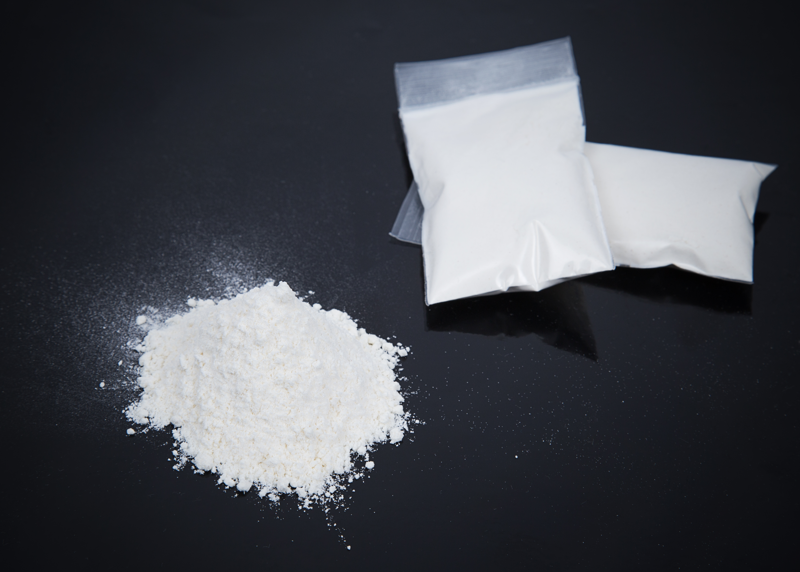
1. Chemical Structure and Properties:
Molecular formula: C20H34O4
Systematic name: 1,3-Bis(1-tert-butylperoxy-1-methylethyl)benzene
Appearance: Colorless to pale yellow liquid
Molecular weight: 338.49 g/mol
2. Safety and Handling:
Classified as an organic peroxide, which means it’s potentially explosive and requires careful handling
Should be stored in a cool, dry place away from heat sources and incompatible materials
Personal protective equipment (PPE) such as gloves, safety goggles, and lab coats should be used when handling

3. Applications
1) Polymer Initiation:
Serves as a free radical initiator in polymerization reactions
Particularly effective in the polymerization of styrene, acrylates, and methacrylates
Helps control molecular weight distribution in polymer synthesis
2) Curing Agent:
Acts as a crosslinking agent in thermoset resins
Used in the curing of unsaturated polyester resins
Facilitates the hardening process in certain epoxy systems
3) Rubber and Elastomer Production:
Employed in the vulcanization of natural and synthetic rubbers
Aids in improving the elasticity and durability of rubber products
Used in the manufacture of high-performance tires and industrial rubber goods
4) Plastic Modification:
Utilized in the modification of thermoplastics to enhance their properties
Helps in improving impact resistance and thermal stability of certain plastics
Used in the production of high-impact polystyrene (HIPS)
5) Adhesive Formulations:
Incorporated into certain structural adhesives to improve bond strength
Used in the development of heat-resistant adhesives
Aids in the curing process of some two-part adhesive systems
6) Coating Technologies:
Applied in the formulation of durable and weather-resistant coatings
Used in UV-curable coating systems for wood and metal surfaces
Helps in developing scratch-resistant coatings for automotive applications
7) Composite Materials:
Utilized in the production of fiber-reinforced composites
Aids in the curing of resin systems used in aerospace and automotive industries
Contributes to the development of lightweight, high-strength materials
8) Polymer Grafting:
Employed in grafting reactions to modify polymer properties
Used in the production of specialty polymers with unique characteristics
Facilitates the creation of polymer blends with enhanced compatibility
9) Dental and Medical Materials:
Used in the formulation of certain dental resins and composites
Applied in the development of specialized medical-grade polymers
Aids in the production of biocompatible materials for medical devices
10) Textile Industry:
Utilized in the treatment of synthetic fibers to improve their properties
Applied in the production of wrinkle-resistant fabrics
Used in the development of flame-retardant textile finishes
11) Paper and Pulp Industry:
Employed in certain paper coating formulations
Used in the production of specialty papers with enhanced durability
Aids in developing water-resistant paper products
4. Mechanisms of action
1) Free Radical Generation:
The primary mechanism involves homolytic cleavage of the O-O bond
This cleavage occurs under thermal or photochemical stimulation
The process produces highly reactive alkoxy radicals (RO•)
2) Initiation in Polymerization:
In polymer synthesis, the generated radicals attack carbon-carbon double bonds in monomers
This initiates chain reactions, leading to polymer formation
The rate of initiation can be controlled by adjusting peroxide concentration and temperature
3) Chain Propagation:
The initial radical attack creates a new radical on the monomer
This new radical continues to react with other monomers, propagating the chain
The process continues until termination occurs
4) Crosslinking Mechanism:
In thermoset resins, the radicals induce crosslinking between polymer chains
This results in a three-dimensional network structure
The degree of crosslinking affects the final properties of the material (e.g., hardness, heat resistance)
5. Synthesis
Starting Materials:
1,3-Diisopropylbenzene
tert-Butyl hydroperoxide (TBHP)
Sulfuric acid (as a catalyst)
Reaction Conditions:
Temperature: Usually conducted at 0-5°C initially, then allowed to warm to room temperature
Pressure: Typically carried out at atmospheric pressure
Solvent: Often performed in an inert organic solvent like dichloromethane or chloroform
Synthetic Route:
a. Alkylation:
1,3-Diisopropylbenzene is first synthesized from benzene and propylene using a alkylation
Catalyst: typically AlCl3 or H2SO4
Conditions: 0-50°C, 1-5 atm pressure
b. Peroxidation:
The 1,3-diisopropylbenzene is then reacted with tert-butyl hydroperoxide
This step involves the formation of the peroxide linkages
c. Acid-Catalyzed Rearrangement:
Sulfuric acid catalyzes the rearrangement of the peroxide groups
This step is crucial for forming the final structure
Reaction Mechanism:
Electrophilic aromatic substitution occurs in the first step
The peroxidation step involves a radical mechanism
The final rearrangement follows a carbocation intermediate pathway
Purification:
The crude product is typically purified by distillation under reduced pressure
Further purification may involve recrystallization or column chromatography
Siperox® BIBP 40%
Siperox® BIBP 96%
